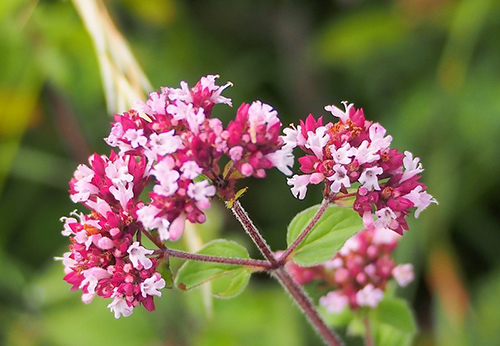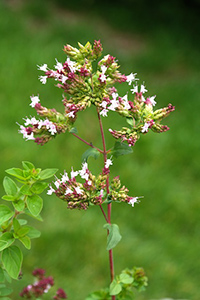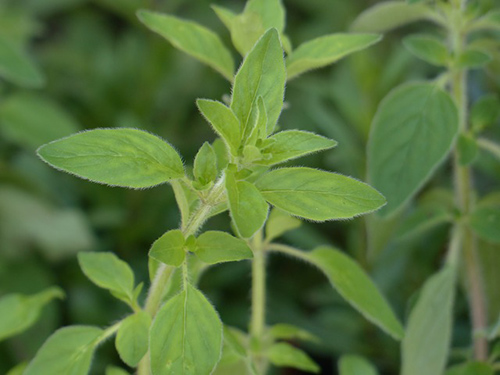Contents
Wild marjoram is very similar to marjoram, though, unlike the latter, it grows wild, as its name points out. Wild marjoram is native to the Middle East and was introduced in Europe in the 16th century.

Wild Marjoram Scientific Facts
- Other names: Mountain mint, oregano.
- French: Marjolaine sauvage, origan.
- Spanish: Oregano.
- Environment: Spread all over Europe, wild marjoram grows in sunny, dry, rocky soils at a medium altitude. It has been naturalized to America.
- Description: This is a vivacious plant of the Labiatae family. Its upright stem usually grows up to 60 cm high. Small leaves grow on every stem knot opposite one another. Its flowers are small and purple-pink.
- Parts of the plant used medicinally: The flower clusters.

Healing Properties and Indications
The whole plant is rich in an essential oil that contains thymol and carvacrol, with sedative, antispasmodic, and carminative properties. Wild marjoram also contains flavonic substances and ursolic acid, which have antirheumatic properties. Its use is recommended for:
- Digestive disorders: dyspepsia (bad digestion) of nervous causes, flatulence, spasm, or colic of the digestive organs. Because of its carminative (combats intestinal gas) properties, it is a good seasoning in legume dishes, pizza, and soups.
- Respiratory afflictions with dry or irritating cough, such as laryngitis (throat irritation) or whooping cough. Wild marjoram also has both internal and external expectorant, bechic, and antitussive properties.
- Muscular aches, stiff neck, and lumbago are externally applied as poultices and in skin massages.

How to use Wild Marjoram
- Seasoning: Dry leaves of wild marjoram are used in diverse cuisine recipes.
- Infusion with 15-20g per liter of water. Drink one cup after each meal.
- Essence: The recommended dose is three intakes daily, of 4-6 drops each.
- Steam inhalations for respiratory afflictions, with a handful of plants in the boiling water.
- Poultices: The mashed plant is heated in a bowl, wrapped in a cloth, and then applied to the aching or inflamed area.
- Massage: Some drops of essence are directly applied to the affected area or with essence dissolved into alcohol.
DISCLAIMER: All content on this website is presented solely for educational and informational objectives. Do not rely on the information provided as a replacement for advice, diagnosis, or treatment from a qualified medical expert. If you are pregnant, nursing, or have any preexisting medical concerns, talk to your doctor before using any herbal or natural medicines.
REFERENCES
- George D. Pamplona-Roger, M.D. “Encyclopedia of Medicinal Plants.” George D. Pamplona-Roger, M.D. Encyclopedia of Medicinal Plants. Ed. Francesc X. Gelabert. vols. 2 San Fernando de Henares: Editorial Safeliz, 2000. 464. Print.
Last update on 2025-06-18 / Affiliate links / Images from Amazon Product Advertising API





